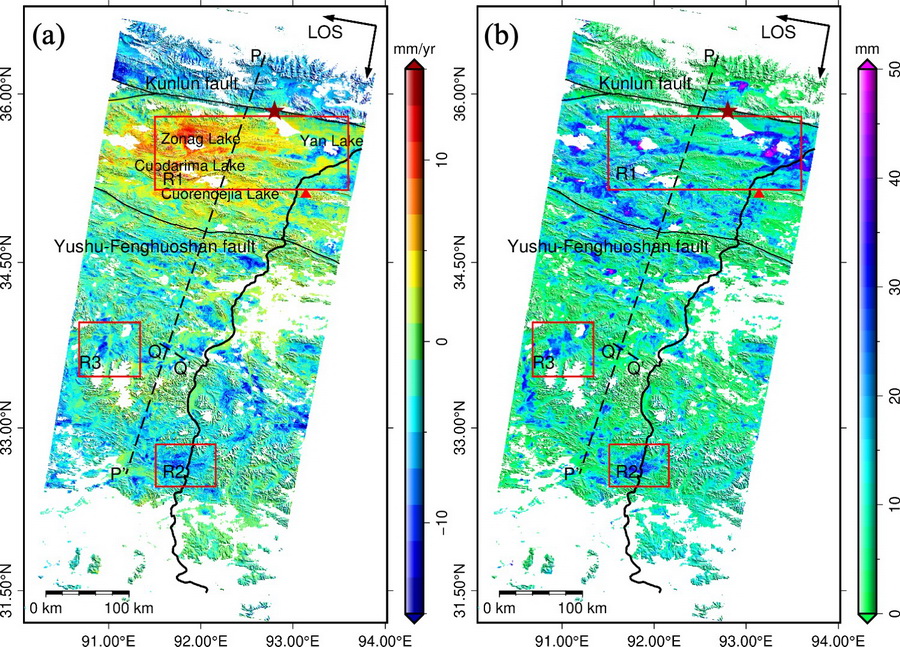Radar Remote Sensing Reveals Magnitudes and Patterns of Large-scale Permafrost Ground Deformation
Updatetime:2021-11-25From:
【Enlarge】【Reduce】
Permafrost on the Qinghai-Tibet Plateau (QTP) undergoes significant thawing and degradation under climate warming. Ground deformation is a key indicator of permafrost degradation, which can be quantified via the advanced multi-temporal InSAR techniques.
However, due to the strong heterogeneity of freeze-thaw processes, the magnitudes and patterns of large-scale ground deformation on the QTP is limited quantified or understood.
Researchers from the Northwest Institute of Eco-Environment and Resources of the Chinese Academy of Sciences (CAS) developed a MODIS-Land-Surface-Temperature-Integrated InSAR approach to reconstruct the permafrost-related ground deformation, and they observed widespread seasonal and long-term ground deformation on the central QTP.
By applying the geophysical detector and spatial analysis, the researchers found that terrain slope is the main factor controlling the seasonal deformation. Strong magnitudes and variations of seasonal deformation are most pronounced in flat or gentle-slope regions due to the high water capacity.
In addition, the researchers found that a linear subsidence is higher in the regions with high ground ice content and warm permafrost. These findings infer that under continuously warming, the transition from cold permafrost to warm permafrost may lead to more extensive ground ice loss.
This study demonstrates the capability of the permafrost-tailored InSAR approaches to quantify the magnitudes and spatial variations of the freeze-thaw processes and the melting of ground ice under different surface conditions (such as different terrains, vegetation types, ice-rich or ice-poor permafrost) at a high resolution over large scales.
In the remote or inaccessible permafrost regions on the QTP or in the Arctic, this study provides practical permafrost-tailored InSAR methods and strategies to map and quantify the freeze-thaw processes and the degradation of permafrost over large scales, which is valuable for understanding the permafrost response to climate warming and local disturbance.
This work has been published on Remote Sensing of Environment. The ground deformation maps on the central QTP can be downloaded at National Cryosphere Desert Data Center.

Seasonal and linear ground deformation on the central Qinghai-Tibet Plateau. (Image by CHEN Jie)
Contact:
CHEN Jie
E-mail: chenjie@lzb.ac.cn
Appendix




